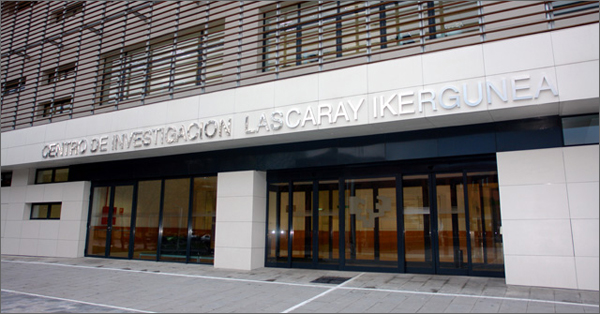Overview

The University of the Basque Country (UPV/EHU) approached the construction of the building via the "2006-2010 Multi-year Investment Plan" aiming to provide the Alava Campus with specific R&D infrastructures, and in order to ensure and promote top-quality teaching, excellence in research, and knowledge transfer to the productive fabric of the country.
The Lascaray Research Center is equipped to meet the growing space needs of General Science and Technology Research Services and excellence in Research Groups in the area of Life Sciences and Quality of Life.
Located in the center of the Alava Campus, the building was inaugurated on 26 November 2009 with the presence of the Rector of the University of the Basque Country (UPV/EHU)/Euskal Herriko Unibertsitatea, Iñaki Goirizelaia; the Vice Rector of the Álava Campus, Eugenio Ruiz Urrestarazu; the Minister for Education, Universities and Research of the Basque Government, Isabel Celaá and descendants of Alava's Researcher Lucio Lascaray.
The name
Lucio Lascaray Ondarra (Vitoria-Gasteiz, 1903-1982) was a researcher of international renown, who published his studies in German, French, English and American texts. Lascaray knew perfectly how to combine his research capacity and business competence, reflecting a great ability to apply, at the time, his own R&D to the company.
This Vitoriano (Vitoria-Gasteiz native) studied secondary school at the Colegio de los Marianistas, scoring the highest grades. His parents decided to send him to study chemical engineering in Germany, as this discipline was not taught here. Upon his return, he managed the family business and began changing it, adapting the latest techniques in fatty acid development into industrial soap manufacturing.
He was remarkable in manufacturing new products, such as Jabonina (used in washing sweaters worn by workers) and later pioneered the detergents that transformed the Jabonina business. Also, Lascaray launched new industrial soap applications for wire-drawing and new products used in the iron and steel foundries business, by using CO2 for the manufacture of casting molds.
The same happened in the field of tallow fatty acids for the manufacture of stearic acids and glycerin oleins, allowing the business to evolve given the many applications they had at the time right after the Civil War: tire manufacturing, stearates, plastics, etc.
He also created a reagent for the production of vegetable oils. But maybe younger people will better remember him because he created a shaving soap under the popular LEA brand (La Estrella Alavesa).
Lascaray Lucio was recognized by the Oil Institute of Seville (the most prestigious in the country) for his dedication to the world of fatty products and derivatives, likewise, he was named president of the European Committee on Terminology for Detergents.
Likewise, Lucio Lascaray was awarded the Alfonso X 'The Wise' medal. The ultimate accomplishment of this researcher was the new LEA factory, where he drafted his own drawings for the building where the facilities are located, and his contribution to its commissioning, especially for the construction of the new distillation plant.
A remarkable aspect of his supportive attitude is represented by his participation in various charities; for example, being a member of the Las Nieves Asylum Board until his death.

